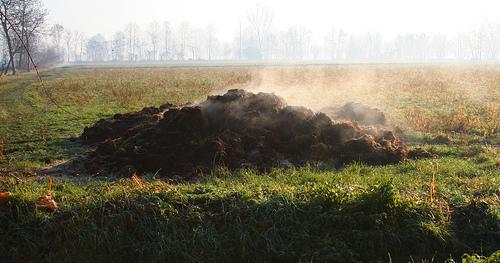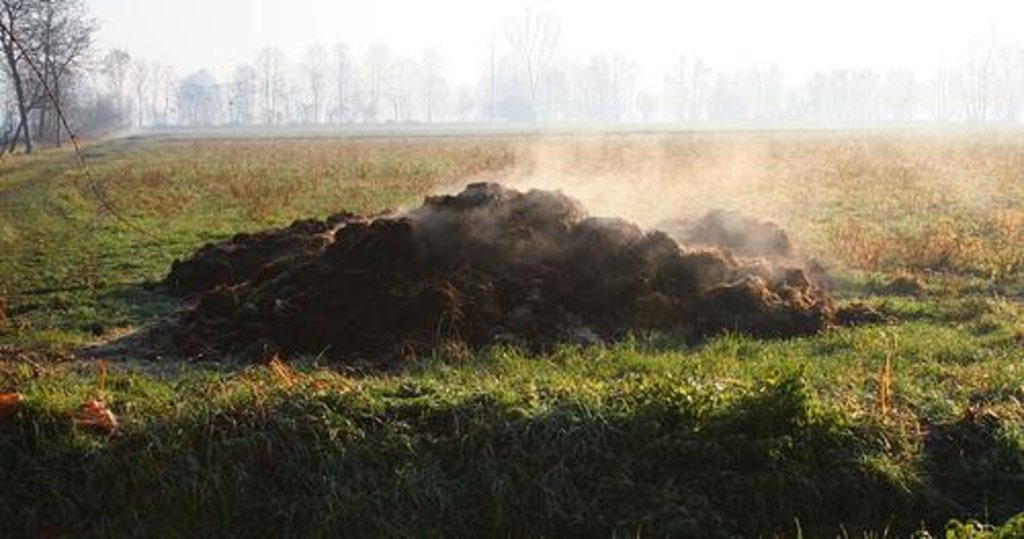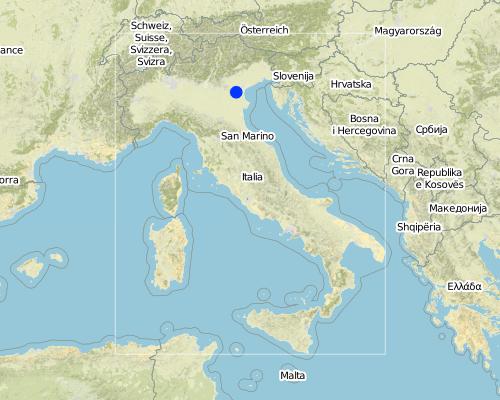Re-introduction of organic amendments in croplands [Italy]
- Creation:
- Update:
- Compiler: Nicola Dal Ferro
- Editor: –
- Reviewer: Fabian Ottiger
Re-introduzione di ammendanti organici
technologies_1280 - Italy
View sections
Expand all Collapse all1. General information
1.2 Contact details of resource persons and institutions involved in the assessment and documentation of the Technology
SLM specialist:
Morari Francesco
francesco.morari@unipd.it
University of Padova
Via 8 Febbraio 1848, 2, 35122 Padova PD, Italy
Italy
Name of project which facilitated the documentation/ evaluation of the Technology (if relevant)
Preventing and Remediating degradation of soils in Europe through Land Care (EU-RECARE )Name of the institution(s) which facilitated the documentation/ evaluation of the Technology (if relevant)
University of Padova (UNIPD) - Italy1.3 Conditions regarding the use of data documented through WOCAT
When were the data compiled (in the field)?
23/04/2015
The compiler and key resource person(s) accept the conditions regarding the use of data documented through WOCAT:
Yes
1.5 Reference to Questionnaire(s) on SLM Approaches
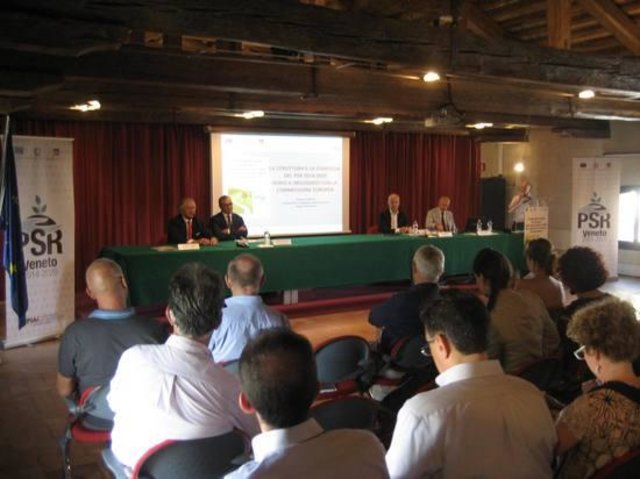
Rural development programme in the Veneto region [Italy]
Developing rural areas in the Veneto region through sustainable land management policies
- Compiler: Nicola Dal Ferro
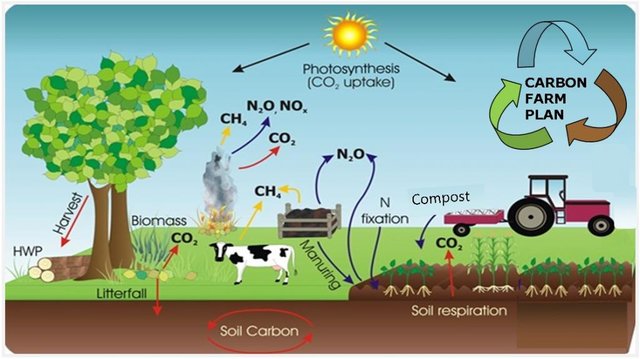
Carbon farming [Italy]
Managing land, water, plants and animals to meet the landscape restoration, climate change and food security.
- Compiler: Nicola Dal Ferro
2. Description of the SLM Technology
2.1 Short description of the Technology
Definition of the Technology:
Re-introduction of biosolids to improve fertility of mineral soils
2.2 Detailed description of the Technology
Description:
Since 1960, organic amendments in Italy have been the unique source of nutrients for croplands. Only in the last fifty years, mineral inputs (e.g. nitrogen, phosphorus) have achieved great importance to supply the increasing nutrient needs of cropping systems, although their use do not replace the whole benefits that organic matter provides to the crops and the soil.
Purpose of the Technology: The re-introduction of organic amendments as a fertilisation management strategy is therefore promoted to increase the soil quality and reduce the loss of organic matter, especially in mineral soils. Therefore in Veneto region it was adopted as an agri-environmental measure of the Rural Development Programme (RDP) 2007-2013 to extend sustainable land management.
Establishment / maintenance activities and inputs: The agricultural production in the Veneto region is somehow divided between a flat area upstream (northern plain), where breeding is a very important agricultural activity and a flat area downstream (southern plain), where most of the grain and soybean production is concentrated. In this context, the low economic value given to organic amendments makes it difficult to move manure for north to south. As a result, the RDP finaced the use of organic inputs throughout the agricultural lands, especially favouring the re-introduction of organic amendments in mineral soils with low organic matter cointent.
Natural / human environment: The soil will benefit from organic amendments input. Particularly, high soil organic matter content will improve nutrient cycling and availability, soil water storage capacity, soil structure stability and finally crop productivity. From an environmental point of view, using organic amenedments istead of mineral inputs as a fertilization strategy will improve the carbon cycle by reducing GHG emissions to the atmosphere and increasing the soil organic carbon (SOC) content.
2.3 Photos of the Technology
2.5 Country/ region/ locations where the Technology has been applied and which are covered by this assessment
Country:
Italy
Region/ State/ Province:
Veneto region
Further specification of location:
Low venetian plain of Veneto region
Map
×2.7 Introduction of the Technology
Specify how the Technology was introduced:
- through projects/ external interventions
3. Classification of the SLM Technology
3.2 Current land use type(s) where the Technology is applied

Cropland
- Annual cropping
Comments:
Major land use problems (compiler’s opinion): Soils in the low Venetian plain of the Veneto region generally suffer from a loss of soil organic matter (SOM) that is strongly affected by their natural texture and climatic conditions. Moreover, in the last 50 years intensive tillage practices contributed to a further SOM decrease, estimated at 0.02-0.58 t/ha/y of carbon.
Major land use problems (land users’ perception): Decrease of productivity, soil compaction. To date, few farmers has adopted voluntarily conservation practices to reduce a decline of soil fertility and SOM content, symptom of poor perception of the problem. Moreover, the low technical know-how causes low yield performances and discouraged farmers to adopt the SLT.
3.3 Further information about land use
Water supply for the land on which the Technology is applied:
- mixed rainfed-irrigated
Number of growing seasons per year:
- 1
Specify:
Longest growing period in days: 210Longest growing period from month to month: March to OctoberSecond longest growing period in days: 180
3.4 SLM group to which the Technology belongs
- integrated soil fertility management
3.5 Spread of the Technology
Specify the spread of the Technology:
- evenly spread over an area
If the Technology is evenly spread over an area, indicate approximate area covered:
- 1,000-10,000 km2
3.6 SLM measures comprising the Technology

agronomic measures
- A2: Organic matter/ soil fertility
Comments:
Main measures: agronomic measures
Type of agronomic measures: manure / compost / residues
3.7 Main types of land degradation addressed by the Technology

chemical soil deterioration
- Cn: fertility decline and reduced organic matter content (not caused by erosion)

biological degradation
- Bh: loss of habitats
Comments:
Main type of degradation addressed: Cn: fertility decline and reduced organic matter content
Secondary types of degradation addressed: Bh: loss of habitats
Main causes of degradation: soil management, population pressure
3.8 Prevention, reduction, or restoration of land degradation
Specify the goal of the Technology with regard to land degradation:
- prevent land degradation
- reduce land degradation
Comments:
Secondary goals: rehabilitation / reclamation of denuded land
4. Technical specifications, implementation activities, inputs, and costs
4.2 Technical specifications/ explanations of technical drawing
Technical knowledge required for field staff / advisors: low
Technical knowledge required for land users: low
Main technical functions: increase in organic matter
Secondary technical functions: improvement of subsoil structure (hardpan), increase / maintain water stored in soil
Manure / compost / residues
Material/ species: Farmyard manure
Quantity/ density: 30 t/ha
4.3 General information regarding the calculation of inputs and costs
other/ national currency (specify):
€
Indicate exchange rate from USD to local currency (if relevant): 1 USD =:
0.8
Indicate average wage cost of hired labour per day:
21.00
4.6 Maintenance/ recurrent activities
| Activity | Type of measure | Timing/ frequency | |
|---|---|---|---|
| 1. | Purchase and distribution of manure | Agronomic | 1/year |
4.7 Costs and inputs needed for maintenance/ recurrent activities (per year)
| Specify input | Unit | Quantity | Costs per Unit | Total costs per input | % of costs borne by land users | |
|---|---|---|---|---|---|---|
| Labour | Purchase and distribution of manure | t/ha | 30.0 | 5.6 | 168.0 | 15.0 |
| Total costs for maintenance of the Technology | 168.0 | |||||
4.8 Most important factors affecting the costs
Describe the most determinate factors affecting the costs:
Moving large amounts of organic amendments of low economic value, where required. Estimated costs consist of material transportation and distribution.
5. Natural and human environment
5.1 Climate
Annual rainfall
- < 250 mm
- 251-500 mm
- 501-750 mm
- 751-1,000 mm
- 1,001-1,500 mm
- 1,501-2,000 mm
- 2,001-3,000 mm
- 3,001-4,000 mm
- > 4,000 mm
Agro-climatic zone
- sub-humid
Thermal climate class: temperate
5.2 Topography
Slopes on average:
- flat (0-2%)
- gentle (3-5%)
- moderate (6-10%)
- rolling (11-15%)
- hilly (16-30%)
- steep (31-60%)
- very steep (>60%)
Landforms:
- plateau/plains
- ridges
- mountain slopes
- hill slopes
- footslopes
- valley floors
Altitudinal zone:
- 0-100 m a.s.l.
- 101-500 m a.s.l.
- 501-1,000 m a.s.l.
- 1,001-1,500 m a.s.l.
- 1,501-2,000 m a.s.l.
- 2,001-2,500 m a.s.l.
- 2,501-3,000 m a.s.l.
- 3,001-4,000 m a.s.l.
- > 4,000 m a.s.l.
5.3 Soils
Soil depth on average:
- very shallow (0-20 cm)
- shallow (21-50 cm)
- moderately deep (51-80 cm)
- deep (81-120 cm)
- very deep (> 120 cm)
Soil texture (topsoil):
- medium (loamy, silty)
Topsoil organic matter:
- medium (1-3%)
If available, attach full soil description or specify the available information, e.g. soil type, soil PH/ acidity, Cation Exchange Capacity, nitrogen, salinity etc.
Soil fertility is low
Soil drainage/infiltration is medium
Soil water storage capacity is medium
5.4 Water availability and quality
Ground water table:
< 5 m
Availability of surface water:
good
Water quality (untreated):
good drinking water
5.5 Biodiversity
Species diversity:
- medium
5.6 Characteristics of land users applying the Technology
Market orientation of production system:
- commercial/ market
Relative level of wealth:
- average
Individuals or groups:
- individual/ household
Level of mechanization:
- mechanized/ motorized
Indicate other relevant characteristics of the land users:
Land users applying the Technology are mainly common / average land users
Population density: 200-500 persons/km2
Annual population growth: 0.5% - 1%
Off-farm income specification: It is assumed that this technology is spread throughout the agricultural sector,therefore it is not possible to define an average off-far income.
5.7 Average area of land owned or leased by land users applying the Technology
- < 0.5 ha
- 0.5-1 ha
- 1-2 ha
- 2-5 ha
- 5-15 ha
- 15-50 ha
- 50-100 ha
- 100-500 ha
- 500-1,000 ha
- 1,000-10,000 ha
- > 10,000 ha
Is this considered small-, medium- or large-scale (referring to local context)?
- medium-scale
5.8 Land ownership, land use rights, and water use rights
Land ownership:
- individual, not titled
Land use rights:
- leased
- individual
Water use rights:
- communal (organized)
- leased
5.9 Access to services and infrastructure
health:
- poor
- moderate
- good
education:
- poor
- moderate
- good
technical assistance:
- poor
- moderate
- good
employment (e.g. off-farm):
- poor
- moderate
- good
markets:
- poor
- moderate
- good
energy:
- poor
- moderate
- good
roads and transport:
- poor
- moderate
- good
drinking water and sanitation:
- poor
- moderate
- good
financial services:
- poor
- moderate
- good
6. Impacts and concluding statements
6.1 On-site impacts the Technology has shown
Socio-economic impacts
Production
crop production
risk of production failure
Socio-cultural impacts
recreational opportunities
SLM/ land degradation knowledge
conflict mitigation
Improved livelihoods and human well-being
Comments/ specify:
By favouring more sustainable land management practices.
Ecological impacts
Soil
soil loss
soil organic matter/ below ground C
6.2 Off-site impacts the Technology has shown
buffering/ filtering capacity
6.3 Exposure and sensitivity of the Technology to gradual climate change and climate-related extremes/ disasters (as perceived by land users)
Gradual climate change
Gradual climate change
| Season | Type of climatic change/ extreme | How does the Technology cope with it? | |
|---|---|---|---|
| annual temperature | increase | not well |
6.4 Cost-benefit analysis
How do the benefits compare with the establishment costs (from land users’ perspective)?
Short-term returns:
positive
Long-term returns:
positive
How do the benefits compare with the maintenance/ recurrent costs (from land users' perspective)?
Short-term returns:
positive
Long-term returns:
positive
6.5 Adoption of the Technology
Comments:
Comments on acceptance with external material support: The technology was adopted by farmers who did not reduce their incomes as a consequence of its application
Comments on spontaneous adoption: Farmers with livestock partly adopt the technology voluntarily
There is no trend towards spontaneous adoption of the Technology
6.7 Strengths/ advantages/ opportunities of the Technology
| Strengths/ advantages/ opportunities in the land user’s view |
|---|
| Improves soil fertility |
| Strengths/ advantages/ opportunities in the compiler’s or other key resource person’s view |
|---|
|
Enhances distribution of organic amendments throughout the whole region How can they be sustained / enhanced? Favouring the reconversion from liquid to farmyard manure |
| Promotes knowledge between partners |
6.8 Weaknesses/ disadvantages/ risks of the Technology and ways of overcoming them
| Weaknesses/ disadvantages/ risks in the land user’s view | How can they be overcome? |
|---|---|
| Costs for transport and distribution of large amiunts of material with low economic value | More subsidies |
| Promoting knowledge between partners |
| Weaknesses/ disadvantages/ risks in the compiler’s or other key resource person’s view | How can they be overcome? |
|---|---|
| High doses can increase diffuse pollution |
7. References and links
7.2 References to available publications
Title, author, year, ISBN:
Programma di sviluppo rurale per il veneto 2007-2013, Regione Veneto, 2007. Dipartimento Agricoltura e Sviluppo Rurale.
Links and modules
Expand all Collapse allLinks

Rural development programme in the Veneto region [Italy]
Developing rural areas in the Veneto region through sustainable land management policies
- Compiler: Nicola Dal Ferro

Carbon farming [Italy]
Managing land, water, plants and animals to meet the landscape restoration, climate change and food security.
- Compiler: Nicola Dal Ferro
Modules
No modules


